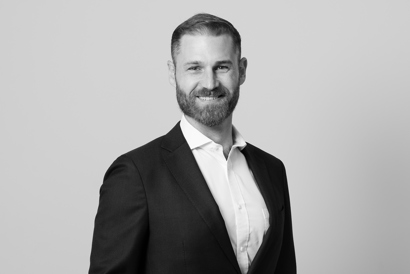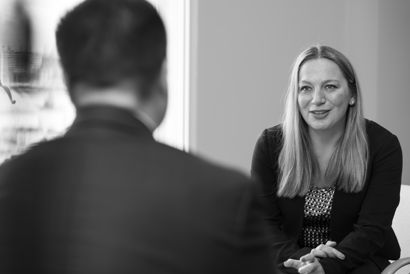As part of our launch of The Equity Project, Burford is honored to be joined by a group of outstanding lawyers and legal industry leaders who as Equity Project Champions are helping us bring attention to the need to provide economic incentives to help close the gender gap in law.
In September 2018, we interviewed some of our Equity Project Champions. We will share excerpts from their interviews and comments in a series of five posts.
We’re grateful to these and all of our Equity Project Champions for their invaluable support as well as their willingness to share their perspectives in their limited time.
Carolyn Lamm, Partner, White & Case
The Honorable Katherine B. Forrest, Partner, Cravath, Swaine & Moore
Dr. Nadine Herrmann, Managing Partner and Chair, EU and German Competition Law Practice, Quinn Emanuel
Nicole D. Galli, Managing Partner, Law Offices of N.D. Galli; Founder and President, Women Owned Law
Sue Prevezer QC, Chair, International Trial Practice, Quinn Emanuel
Roberta D. Liebenberg, Senior Partner, Fine, Kaplan and Black
Tara Lee, Co-Chair, Transnational Litigation Group, Quinn Emanuel
Alan Bryan, Senior Associate General Counsel, Walmart
The gender-based wage gap in law has been explained by some as reflecting women’s greater likelihood to choose areas of law with lower-average salaries than more male-dominated areas—including commercial litigation. Assuming that’s consistent with your experience, what do you perceive to be the special barriers to women in specific practice areas like commercial litigation?
Katherine Forrest: In private practice and public service, I have worked alongside and mentored many dynamic women litigators. From the bench, however, I presided over more than 100 trials and heard hundreds of motions argued. The reality was that I saw far more men than women acting as lead counsel.
I am not sure why this is—no doubt there are many forces at work. One thing I have found generally is that commercial litigation is often the equivalent of practicing business law—and men enter law school and the work force with (on the whole) greater comfort with basic business concepts than many women. This is not universally the case—but it is one factor sometimes in play. To try and neutralize this, one of my first recommendations to female students and lawyers is that they make sure they are as educated in the world of business as their male counterparts—that they become conversant in the lingo of the business world and understand what economic forces are at work in various industries. I always recommend that they regularly read the business section of The New York Times, The Wall Street Journal, The Economist and the FT.
Nadine Herrmann: Commercial litigation is an area of law that attracts (and requires) a certain aggressiveness: Clients want someone who fights for them. The adversarial setting makes it easier for male attorneys to find acceptance for behavior that would be called out as rude or inappropriate in other contexts. I believe this is changing, though. Well-researched and calmly presented case work can be much more successful.
Roberta Liebenberg: As found in an ABA study I co-authored with Stephanie Scharf entitled, “First Chairs at Trial: More Women Need Seats at the Table,” women litigators are far less likely than their male counterparts to be chosen to serve as lead counsel in class actions and as first chairs at trial in all practice areas, but particularly in the high fee, high billable hour practice areas that are overwhelmingly dominated by men.
The same barriers that have impeded the advancement of women in the profession generally have likewise made it more difficult for them to achieve success in those lucrative practice areas, which in turn dissuades them from entering those areas in the first place. In addition, the dearth of senior women lawyers in those areas to serve as role models, mentors and sponsors for younger women also perpetuates this disparity.
Tara Lee: Frankly, this isn’t consistent with my current experience. When my practice evolved to the place where I needed to be at a litigation-focused firm, I focused very specifically on what I call “pay chart equity” and avoided places with visible and invisible barriers to them. The most important questions you can ask when you are deciding what firm you want to be at are: “what percentage of women do you have in the top ten percent of your pay chart” and “how many women are there in the top twenty names of the pay chart”? That’s more important in the end than how many co-chairs of practice groups a firm can appoint.
Alan Bryan: I respectfully disagree with the notion that fewer women practice commercial litigation, M&A, intellectual property, privacy, and the other categories of the law historically deemed “important” by firms. However, it would be my assumption that if you isolate whatever one considers the “premier” categories of law, you would find at least some sort of gender gap in those specific category salaries. From my experience, I would venture that any gender-based wage gap in law is based on much deeper factors. To name a few: Implicit and (even still) explicit bias; inequitable succession planning skewing toward male lawyers within firms; lack of the same business development opportunities (or having to develop more because of the client succession problem); inequitable distribution of “administrative” or other non-billable tasks.
Sue Prevezer: I am not sure that there are special barriers to women working in commercial litigation. However, the competition for work in commercial litigation is fierce and women tend to be more reticent in promoting themselves than men. Moreover, the working environment is also often not conducive to the way many women work.
Read more of The Equity Project Roundtable Q&A
Part I • Part II • Part III • Part IV
To read the full roundtable, download the Autumn 2018 Burford Quarterly.




